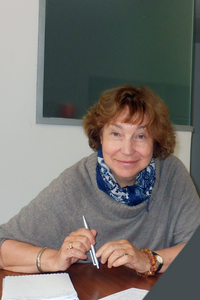A City That Doesn’t Exist: The Lost Everyday Life of J.L. Borges
https://doi.org/10.46272/2409-3416-2025-13-3-83-99
Abstract
The poetic texts of Borges, dedicated to everyday life and the image of Buenos Aires, clearly demonstrate the side of the great Argentine writer’s work, which for many remains unnoticed due to his established literary reputation. This article provides an analysis not of Borges the bookworm or Borges the librarian, who talks about literature and philosophy, immersing the reader in sophisticated mystifications, but of Borges the emotional, attentive to details, landscape and people that actually made up his everyday life. This new point of view is relevant, since modern Borges studies focus predominantly on either intertextual connections (the model of this kind of studies is «Borges and others»), or textual aspects, or provide a philosophical analysis of his works. The purpose of the article is to demonstrate how Borges uses the attributes of everyday life in his poetry. The poems used as material are: «Sala vacía» from the book «Fervor de Buenos Aires» (1923), «Fundación mítica de Buenos Aires» from «Cuaderno San Martín» (1929), two poems entitled «Buenos Aires» («El otro, el mismo», 1964), «Buenos Aires» («Elogio de la sombra», 1969)), «Buenos Aires, 1899» («Historia de la noche», 1977) and «Buenos Aires» («La cifra», 1981). In the early texts by Borges, the city has a more symbolic meaning, serving as a mediator between the real and the metaphysical. In his later poems, written during his blindness, Borges constructs an image of the Buenos Aires of his youth, paying particular attention to everyday life in the 1920s–40s. In essence, Old Buenos Aires is a lost paradise for Borges, which he himself confirms in his later texts.
About the Author
B. V. KovalevRussian Federation
Boris V. Kovalev, Assistant Professor, Department of Romance Philology
199034, Saint Petersburg, Universitetskaya embankment, 7–9
References
1. Гениева Е.Ю. (2008) Библиотека как центр межкультурной коммуникации, Москва, РОССПЭН, 208 с.
2. Genieva E.Yu. (2008) Biblioteka kak tsentr mezhkul’turnoi kommunikatsii [The library as a center of intercultural communication], Moscow, ROSSPEN, 208 p. (In Russian)
3. Ковалев Б.В. (2024a) О некоторых квантитативных подходах к периодизации поэтических текстов Хорхе Луиса Борхеса, Terra Lingüística, no. 1, pp. 36–48. DOI: 10.18721/ JHSS.15103.
4. Kovalev B.V. (2024a) O nekotorykh kvantitativnykh podkhodakh k periodizatsii poeticheskikh tekstov Khorkhe Luisa Borkhesa [On Certain Quantitative Approaches to Periodization of Luis Borges’s Poetry], Terra Linguistica, no. 1, pp. 36–48. DOI: 10.18721/JHSS.15103. (In Russian)
5. Ковалев Б.В. (2024b) Русская библиотека Х. Л. Борхеса: имена, контексты, лакуны, Русская литература, № 2, pp. 226–234. DOI: 10.31860/0131-6095-2024-2-226-234.
6. Kovalev B.V. (2024b) Russkaya biblioteka Kh. L. Borkhesa: imena, konteksty, lakuny [Russian Library of J.L. Borges: names, contexts, lacunae], Russkaya Literatura, no. 2, pp. 226–234. DOI: 10.31860/0131-6095-2024-2-226-234. (In Russian)
7. Межиковская Т.И. (2004) Литература Аргентины, История литератур Латинской Америки. Т. 4, ч. 2. ХХ век: 20–90 годы, под ред. В.Б. Земскова, Москва, ИМЛИ РАН, 2004, с. 370–451.
8. Mezhikovskaya T.I. (2004) Literatura Argentiny [Literature of Argentina], in V.B. Zemskov Istoriia literatur Latinskoĭ Ameriki. T. 4, ch. 2. XX vek: 20–90 gody [The History of Latin American literature. Vol. 4, part 2. The 20th century: 1920s – 1990s], Moscow, IMLI RAN, 2004, pp. 370–451. (In Russian)
9. Эко У. (2016) О литературе, Москва, АСТ, Corpus, 2016, 416 с.
10. Eсo U. (2016) O literaturе [On literature], Moscow, AST, Corpus, 416 p. (In Russian).
11. Betti M. (2021) La perla o la rosa. Góngora según Borges [The Pearl or the Rose. Góngora according to Borges], Arte Nuevo: Revista de Estudios Áureos, no. 8, pp. 230–258. DOI: https://doi.org/10.14603/8G2021 (In Spanish)
12. Candelaria B. (2014) Variaciones sobre el poema “Rusia” [Variations on the poem “Russia”], Variaciones Borges, no. 38, pp. 29–46. (In Spanish)
13. García C. (2015) El joven Borges y el expresionismo literario alemán [The young Borges and German literary expressionism], Córdoba, Universidad de Córdoba, 232 p. (In Spanish)
14. Helft N. (2003) History of the land called Uqbar, Variaciones Borges, no. 15, pp. 151–180. (In Spanish)
15. Kressova N. (2007) Bajo el signo de Proteo. Estudio comparado de temas y motivos en las obras de J. L. Borges y V. Nabokov [Under the Sign of Proteus: A Comparative Study of Themes and Motifs in the Works of J. L. Borges and V. Nabokov], Tesis doctoral, Granada, 302 p. (In Spanish)
16. Martínez T.E. (1999) Borges y Whitman: el otro, el mismo [Borges and Whitman, the other, the same], Revista chilena de literaturа, no. 55, pp. 189–194. (In Spanish)
17. Millán H.M. (2009) El Platón de Borges [Plato of Borges], Variaciones Borges, no. 28, pp. 163–186. (In Spanish)
18. Miller A. (2010) Borges canta a Whitman [Borges sings to Whitman], Variaciones Borges, no. 30, pp. 145–159. (In Spanish)
19. Salinas A.M. (2020) Los arquetipos en Borges: clasificación y análisis [Archetypes in
20. Borges: classification and analysis], Variaciones Borges, no. 50, pp. 127–148. (In Spanish)
21. Weinberger E. (1999) Notes, in J.L. Borges Selected non-fictions, New York, Viking, Penguin Group, pp. 523–548.
22. Zito C.A. (1999a) El Buenos Aires de Borges [Buenos Aires of Borges], Aguilar, 1999, 258 p. (In Spanish)
23. Zito C.A. (1999b) El Buenos Aires de Borges [Buenos Aires of Borges], Variaciones Borges, no. 8, pp. 108–120. (In Spanish)
Review
For citations:
Kovalev B.V. A City That Doesn’t Exist: The Lost Everyday Life of J.L. Borges. Cuadernos Iberoamericanos. 2025;13(3):83-99. (In Russ.) https://doi.org/10.46272/2409-3416-2025-13-3-83-99

























